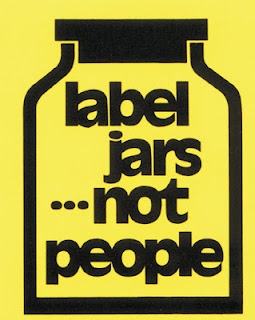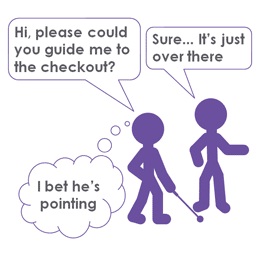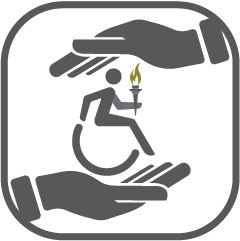We live in a modern world where people like to “label” things and especially one another. We start being labelled for our race when we are born. We then go to school and we are labelled by educators for our academic abilities or by our peers for how “cool” we are. Once we become an adult we get labelled for how successful we are in possessions, achievements or wealth. For some, this inspire them to achieve more but for many the labelling becomes a burden they carry with them on a daily basis.
Similarly, comes the debate of calling someone a “disabled person” vs a “person with a disability”. Most people will agree that the latter is more acceptable, seeing the person first, and not the disability. Just like many other people who are labelled for various reasons, persons with disabilities have many obstacles to overcome.
One of these obstacles includes that they might find that other people are not always sure how to address them. To assist with this, we will, over the next few posts discuss a few common do’s and don’ts for communicating with persons with various types of disabilities, helping people look at “labels” differently so to eliminate many myths that people relate to them.

Firstly, let us look at persons with physical disabilities i.e. people with mobility needs, visual impairments, hearing impairments as well as people with a short stature:
People who use wheelchair or other mobility devices
People who use wheelchairs have different disabilities, some can use their arms and hands whilst others may be able to get out of their wheelchairs and even walk for short distances.
- Do keep the ramps and wheelchair accessible doors to your building unlocked and unblocked.
- Do be aware of a person’s reach limits. Place as many items as possible within their grasp.
- Do grab your own chair and sit at her level, when talking to a person using a wheelchair.
- Do have signs that direct people to the accessible routes around the facility. Ensure that security guards and receptionists can answer questions about the most accessible way around the building and grounds, including the location of elevators.
- Do be aware of architectural barriers such as narrow doorways, stairs, curbs, etc. when giving wheelchair users directions.
- Do have eye and physical contact with chair users in the same respectful manner you would a person that isn’t in a wheelchair.
- Don’t lean over someone who uses a wheelchair to shake another person’s hand.
- Don’t ask a wheelchair user to hold coats.
- Don’t put your drink on the desktop attached to someone’s wheelchair.
- Don’t grab people who use canes or crutches because they need their arms to balance themselves. Always ask before offering help.
- Don’t push, lean on, or hold onto a person’s wheelchair unless the person asks you to.
- Don’t move the wheelchair out of reaching distance when a person transfers out of the wheelchair to a chair, toilet, car or other object.
- Don’t classify persons who use wheelchairs as sick.

People who are blind or visually impaired
People who are blind know how to orient themselves and get around on the street. They are competent to travel without assistance, though they may use a cane or a guide dog.
- Do identify yourself before you make physical contact or start talking to a person who is blind. If a new customer or employee is blind or has low vision, offer him a tour of your facility.
- Do notify your customers who are blind of the changes if you have changed your facility (i.e., rearranged the furniture).
- Do offer your arm for assistance—don’t take his/hers—if he/she needs to be guided. People who are blind may need their arms for balance
- Do walk on the opposite side of a guide dog (where one is used).
- Do keep walkways clear of obstructions.
- Do describe the setting while walking with a person with a visual impairment, noting any obstacles, such as stairs (‘up’ or ‘down’) or a big crack in the sidewalk. Other hazards could include: revolving doors, half-opened filing cabinets or doors, and objects protruding from the wall at head level such as hanging plants or lamps. If you are going to give a warning, be specific – “look out” does not tell the person if he should stop, run, duck or jump.
- Do give specific, non-visual information if you are giving directions e.g. “Walk forward to the end of the room and make a full right.”
- Do inform the person if you need to leave them and ask if he/she needs anything before you leave.
- Do offer to read written information—such as the menu, merchandise labels or bank statements—to customers who are blind. Count out change so that they know which bills are which.
- Do let him/her know where you are plating up on the plate according to a clock orientation (12 o’clock is furthest from them, 6 o’clock is nearest).
- Do remember for a person with low vision good lighting is important.
- Don’t touch the person’s cane or guide dog without permission.
- Don’t assume the person can read Braille, ask the person what alternative format they prefer.
People who are deaf or have hearing loss
Sign language is an entirely different language with a syntax all its own. People who have a hearing loss, however, may rely on amplification and/or seeing the speaker’s lips to communicate effectively. It is helpful to note that the majority of people who sustained a hearing loss as adults do not communicate with sign language and may benefit from writing and listening devices to help improve communication. People with cochlear implants, like other people with hearing loss, will usually inform you what works best for them.
- Do use a qualified sign language interpreter when the exchange of information is complex (e.g., during a job interview or doctor’s visit or when reporting a crime). For simple information exchange (e.g., ordering in a restaurant or registering for a hotel room) writing back and forth is usually acceptable.
- Do follow the person’s cues to find out if she prefers sign language, gesturing, writing or speaking.
- Do look directly at the person who is deaf, and maintain eye contact hen using a sign language interpreter, to be polite. Talk directly to the person (‘What would you like?’), rather than to the interpreter (‘Ask them what they’d like.’).
- Do include people who are deaf in the decision-making process for issues that affect them; don’t decide for them.
- Do rephrase, rather than repeat, sentences that the person does not understand.
- Do use a quiet, well-lit room for effective communication. If you are in front of the light source (e.g., a window) with your back to it, the glare may obscure your face and make it difficult for the person who is hard of hearing to speech read.
- Do speak clearly. Most people who have a hearing loss count on watching people’s lips as they speak to help them understand.
- Don’t chew gum, smoke or obscure your mouth with your hand while speaking.
- Don’t shout. If the person uses a hearing aid, it will be calibrated to normal voice levels; your shout will just distort the words.
People with a short stature
There are various diagnosed types of growth-related disorders that can cause dwarfism and result in the person being very short. For an adult, being treated as cute and childlike can be an obstacle.
- Do be aware of having necessary items within the person’s reach to the maximum extent possible.
- Do be aware that persons of short stature count on being able to use equipment that is at their height.
- Do try to communicate on the same height level.
- Don’t pet or kiss a person of short stature on the head in a condescending manner.
These are just some of the Do’s and Don’ts to consider, keep an eye out for further suggestions for communicating with persons with disabilities. These articles will form part of our series of articles in preparation of International Day of Persons with Disability on 3 December 2017.
Sources:
